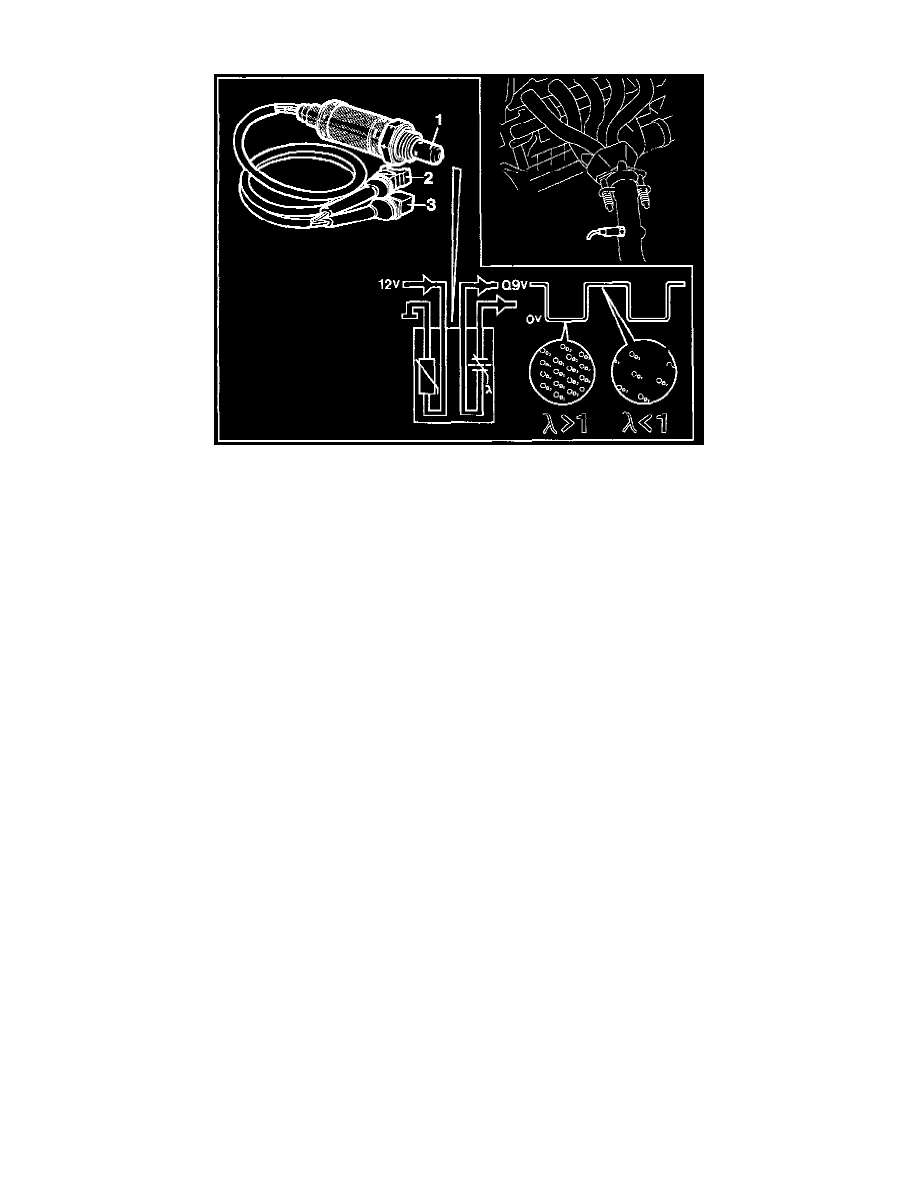850 L5-2.4L VIN 55 B5254S (1993)

Oxygen Sensor: Description and Operation
HEATED OXYGEN SENSOR
The Heated Oxygen Sensor (HO2S) is mounted in the exhaust pipe upstream of the Three-Way Catalytic Converter (TWC), the electrically healed
HO2S delivers an output signal proportional to the oxygen content of the exhaust gases.
The device requires a supply of ambient air as a reference to measure the oxygen content of the gases. Since this is supplied through the wiring, the
leads must not be squeezed together or damaged in any other way.
Components
^
Sensor and preheat element (1)
^
Signal connector (2)
^
Heating current connector (3)
Principle of Operation
The HO2S functions only above a certain temperature (approx. 285°C / 545°F). The normal working temperature varies from 350°C to 850°C (660°F
to 1560°F).
When the ignition is switched ON, current is supplied to the preheat element, which is of the PTC (Positive Temperature Coefficient) type. At
temperatures below the working temperature, the resistance of the element is low and the heating current is high, shortening the heating time.
When normal working temperature is reached, the element resistance increases significantly and the heating current is reduced correspondingly.
Both sensor terminals are connected to the MFI module.
When the engine is running rich, the oxygen content of the exhaust gases is low or zero and the output signal is approx. 0.9 V.
When the engine is running lean, the exhaust gases contain excess oxygen and the output signal falls to almost 0.
The change from high to low signal level occurs at the ideal (stoichiometnc) air/fuel ratio of 14.7:1.
The MFI module uses the HO2S signal to control the fuel injection so as to maintain this optimum value.
